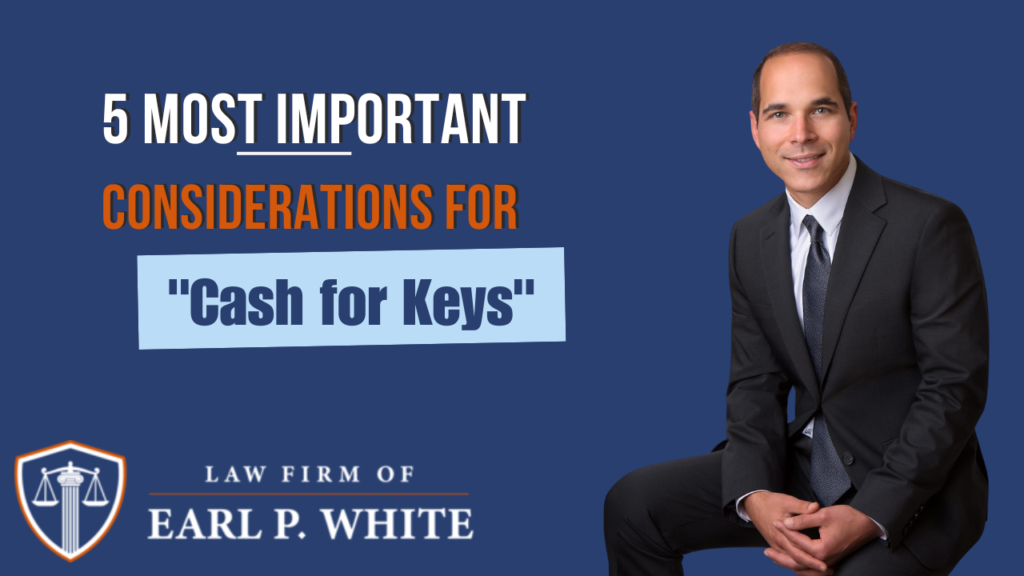Ejectment is the legal process in New Jersey for removing non-tenants, including squatters, and friends and family that refuse to leave. Ejectment involves filing a lawsuit, court hearings, and lock-out by the county sheriff.
New Jersey has different legal procedures for removing tenants and non-tenants.
Ejectment is how an owner removes a squatter, prior owner, or friends and family that won’t leave. Eviction is the process for removing a tenant.
Owners that win an ejectment lawsuit not only regain possession of their property, but are entitled to a money award of damages, court costs, and attorney fees.
What Is Ejectment?
Ejectment is the legal process for removing a non-tenant occupant. Eviction is different than ejectment because evictions apply to landlord-tenant relationships.
Unsure whether ejectment or eviction is needed?
If you answer yes to any of the following questions, written by the courts, eviction is most likely the right course of action:
- Has there been a written or oral lease between you and the person you are seeking to remove;
- Have you accepted right, cash, or services in lieu of rent during the occupancy of the person you are seeking to removal;
- Is there a pending domestic violence complaint between you and the person you are seeking to remove;
- Is the person a sub-tenant, based upon written/verbal lease, which allows subleasing?
- Did you purchase the property from the party you are seeking to removal?
Review our guide How to File Eviction for information on the eviction process.
Examples of Ejectment
Ejectment is the usual remedy when there is no written or verbal lease, and no rent payments.
Here are the most common examples:
- Co-op owners in possession but in breach of their agreement with the co-op board;
- Prior owners at a property after a foreclosure or sheriff sale;
- Squatter or trespassers;
- Friend, family, or significant entering with permission, but refusing to leave;
- Refusing to move out after the tenant passes away.
Steps in the Ejectment Process
Step 1: Notice to Vacate
The ejectment process beings by serving the unauthorized occupant with a Notice to Vacate.
Serving the Notice to Vacate successfully offers several benefits:
- Save on court costs;
- Return to generating income faster;
- Inform the judge ejectment is necessary;
- Prevent claims that the occupant “did not know” the landlord wished for them to leave.
Step 2: File the Ejectment Lawsuit
Legal Documents to File
File the following documents and pay filing fees in the Special Civil Part (not Landlord/Tenant Court):
- Order to Show Cause;
- Verified Complaint;
- Proposed Order for Possession;
- Writ of Possession.
New Jersey created directions to help file for ejectment. Courts provide information but not legal advice.
“Summary” Process
New Jersey permits ejectment cases to proceed in a summary manner to help owners regain possession of their property with less delays.
“Summary” usually means no depositions, document requests, interrogatories, or answers to the complaint.
Summary proceedings for ejectment are authorized by statute:
1. Study by Attorney. The Buyer or the Seller may choose to have an attorney study this contract. If an attorney is consulted, the attorney must complete his or her review of the contract within a three-day period. This contract will be legally binding at the end of this three-day period unless an attorney for the Buyer or the Seller reviews and disapproves of the contract.
2. Counting the Time. You count the three days from the date of delivery of the signed contract to the Buyer and the Seller. You do not count Saturdays, Sundays or legal holidays. The Buyer and the Seller may agree in writing to extend the three-day period for attorney review.
3. Notice of Disapproval. If an attorney for the Buyer or the Seller reviews and disapproves of this contract, the attorney must notify the Broker(s) and the other party named in this contract within the three-day period. Otherwise this contract will be legally binding as written. The attorney must send the notice of disapproval to the Broker(s) by certified mail, by telegram, or by delivering it personally. The telegram or certified letter will be effective upon sending. The personal delivery will be effective upon delivery to the Broker’s office. The attorney should also inform the Broker(s) of any suggested revisions in the contract that would make it satisfactory.
Summary ejectment cases must be filed in the Special Civil Part of the Superior Court:
The following matters shall be cognizable in the Special Civil Part . . . Summary actions for the possession of real property pursuant to N.J.S.A. 2A:35-1 et seq., where the defendant has no colorable claim of title or possession, or pursuant to N.J.S.A. 2A:39-1 et seq.
If landlords request for an ejectment to proceed in a summary fashion, the plaintiff must either certify the facts in the verified complaint to true (Rule 1:4-4(b)) or file an affidavit setting forth admissible facts (Rule 1:6-6). Exhibits – such as photographs or other evidence – may be submitted with the Verified Complaint. Rule 1:4-3.
Businesses entities, other than sole proprietors, must be represented by attorneys in summary actions. Entities “shall neither appear not file any paper.” Rule 6:10; Rule 1:21(c).
Step 3: Judge Signs the Order to Show Cause
After the ejectment case is filed, the court reviews the documents.
A judge signs the Order to Show Cause and scheduling a court hearing if the documents were filed correctly.
Step 4: Serve Documents on the Occupant
Landlords must serve the Order to Show Cause, Verified Complaint, proposed Order of Possession on the unauthorized occupant.
The Order to Show Cause explains how to serve the documents and time frame. Unless the court orders otherwise, the documents must be served “at least ten days before the return day.” Rule 4:67-3.
Options for service include:
- Regular and certified mail (return receipt requested);
- Personally delivering the documents; or
- Regular mail upon the defendant’s attorney.
In most lawsuits, defendants can file an “answer” in response to being served a complaint. Answers are not permitted in summary ejectment cases:
No answer shall be permitted in summary actions between landlord and tenant, summary ejectment and unlawful entry and detainer actions or in actions in the Small Claims Section.
Step 5: File Proof of Service
File a Certification (Proof) of Service with the court once service is complete. he Order to Show Cause explains how to serve the documents and time frame.
The documents let the court know the occupant is aware of the legal action.
Step 6: Court Hearing
At the court hearing, you have the opportunity to prove your case for ejectment.
Facts to prove in an ejectment case are:
- Ownership or authority of the premises;
- Defendant presently occupies the premises;
- A request to vacate was made;
- Occupant refuses to leave;
- Consent has not been granted; and
- No landlord-tenant relationship (i.e. the occupant has not paid rent or had lease)
1. Discovery
Discovery such as interrogatories, depositions, and document requests are not allowed prior a summary action for ejectment.
Rule 6:4-4(a) states:
Interrogatories may be serviced pursuant to the applicable provisions of R. 4:17 in all actions except forcible entry and detain actions, summary landlord and tenant actions for the recovery of premises, and actions commenced or pending in the Small Claims Section.
The Appellate Division also held:
In furtherance of the policy behind the summary nature of the proceeding, our court rules do not permit the filing of an answer, a counterclaim, or discovery proceedings. Matters determined in summary dispossess actions are not res judicata in subsequent actions between landlord and tenant, even over the same subject matter.
C. F. Seabrook Co. v. Beck, 417 A.2d 89 (N.J. Super. App. Div. 1980)
2. Default Judgments
Owners may seek a default judgment if the unauthorized occupant fails to appear at the hearing.
A default judgment occurs where a party fails to respond to a court summons or does not appear in court. In the case of ejectment, the court will issue the order for removal if the occupant defaults.
If a party against whom a judgment for affirmative relief is sought has failed to plead or otherwise defendant as provided by these rules or court order, or if the answer has been stricken with prejudice, the clerk shall enter a default on the docket as to such party.
3. Involuntary Dismissal
Plaintiff owners should also make every effort to appear for the hearing. Otherwise, the court may issue an “involuntary dismissal” for failure to comply with the order to appear.
For failure of plaintiff to cause a summons to issue within 15 days from the date of the Track Assignment Notice or to comply with these rules or any court order, the court in its discretion may on defendant’s motion dismiss an action or any claim against the defendant.”
4. Money Award
In addition to removing unauthorized occupants, plaintiffs in ejectment cases are entitled to financial damages, court costs, and reasonable attorneys.
Damages may include “mense” profits – which is profits that were lost due to not being able to rent the property.
Two statutes allow recovering of money damages:
A plaintiff recovering judgment shall be entitled to possession of the real property and shall recover all damages proximately caused by the unlawful entry and detainer including court costs and reasonable attorney’s fees. When a return to possession would be an inappropriate remedy, treble damages shall be awarded in lieu thereof. The judgment may be enforced against either party in a summary manner by any process necessary to secure complete compliance therewith, including the payment of the costs.
In any such action, the plaintiff shall be entitled to recover from the defendant any and all incidental damages, including mesne profits, and the full value of the use and occupation of the premises for the time, not exceeding 6 years, before the commencement of the action, during which the defendant was in possession thereof.
Step 7: Service of the Order of Possession
If the motion for ejectment is successful, the court will issue an “Order for Possesssion”. The Order of Possession directs the occupant to vacate and also outlines financial damages, if any exist.
You must serve the Order for Possession on the occupant who may be allowed a brief period of time for orderly removal.
If the occupant fails to leave by the required time period, plaintiff must then seek the issuance of a Writ of Possession from the Special Civil Part, directing the County Sheriffy
Order has several purposes:
- Awards possession and financial damages, if any, to plaintiff;
- Directs the occupant to vacate by a specific date;
- Sets timeframe for plaintiff to serve the occupant wit the order;
- Authorizes a Writ of Possession from the Special Civil Part that for the County Sheriff to remove the occupant;
- Awards financial damages, if any;
- Setting timeframes to serve the Order for Possession
Step 8: Request Writ of Possession
If the occupant fails to leave by the required time period, plaintiff must apply for a Writ of Possession from the Special Civil Part, directing the County Sheriff to forcibly remove the occupant.
Owners may not engage in “self-help” and force or lock-out the occupant. Owners that improperly remove an occupant from premises can be liable for treble (“triple”) legal damages.
Step 9: Removal by the County Sheriff
The County Sheriff forcibly removes the unauthorized occupant if they have not already left the premises.
Collecting the Money Judgment
As noted above, plaintiffs in ejectment cases can be awarded money for damages, court costs, and reasonable attorney’s fees. Of course, collecting the money is not a simple matter as unauthorized occupants rarely cooperate.
Methods to collect a financial judgment in the Special Civil Part include:
- Settling the matter with the person owing the money;
- Forcing the sale of personal property, including vehicles and real estate (“Writ of Execution on Goods and Chattels”);
- Obtaining a “bank levy” on a savings or checking account; and
- Garnishing wages and salary.


